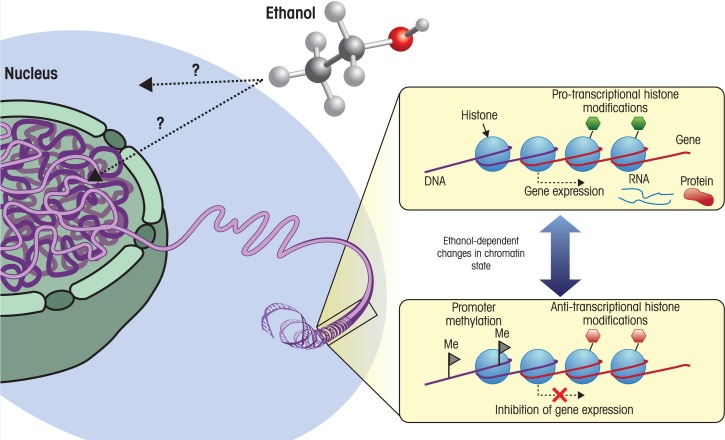Figure 1.
Environmental factors can cause changes in chromatin state. Chromatin, which is comprised primarily of DNA spooled around histone proteins, is located in the cell nucleus. This DNA-packaging system is dynamic, and the local state of chromatin influences gene expression—the processes by which the information encoded in genes is used to create RNA (i.e., transcription) and, ultimately, proteins. The addition of methyl groups (i.e., methylation) to certain DNA building blocks (i.e., cytosine nucleotides) in a regulatory region of a gene called the promoter tends to inhibit transcription of that gene. Histone proteins also can be modified by the addition of various molecules, which influences the recruitment and binding to chromatin of various complexes involved in transcription. These modifications can either promote transcription (i.e., are protranscriptional) or have an inhibitory effect on transcription (i.e., are antitranscriptional), depending on the nature of the modification and the state of the surrounding chromatin. Both DNA methylation and histone modification are dynamic processes, with numerous enzymes that remove and replace these modifications. The prevalence and activity of these enzymes, as well as the availability of substrate (e.g., methyl groups), can be influenced by environmental factors acting at the cellular and nuclear level. For example, ethanol may disrupt the homocysteine-methionine cycle, resulting in a decrease in the levels of S-adenosyl methionine, which acts as a methyl donor for DNA and histone methylation.

